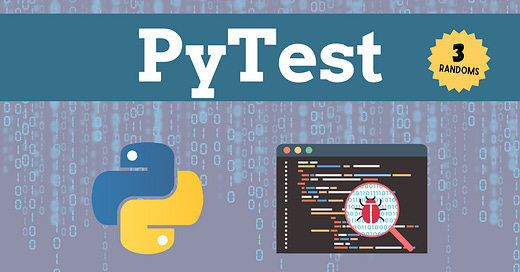PyTest Explained: Simple Techniques to Make Your Python Code Error-Free
Discover how to streamline Python testing with PyTest. Learn fixtures, parametrize tests, and boost code reliability in this step-by-step guide for every Python developer.
Testing your code should be simple and dependable—that’s where PyTest really comes in handy. It’s a powerful, easy-to-use framework in Python that lets you write all kinds of tests, from basic checks to more complex scenarios, to make sure your code runs the way you expect.
It helps you set up tests quickly, run them efficiently, and get clear results. It even takes care of setting up and tearing down tests for you, so you can focus on the parts that matter.
I’ve tried a few different testing tools over the years, but PyTest just clicks for Python projects. It’s saved me so much time by spotting issues early on, and I’m genuinely excited to walk you through getting started with it.
Welcome to PyTest. Check out other 3 Random Articles here
Imagine you're subscribed to a newsletter called 3 Randoms. Each week, it introduces you to three lesser-known Python tools that can make your coding better. It's like expanding your toolbox and discovering new tricks.
PyTest makes it easy to add and organize test functions, so it’s a great choice for keeping your code solid and dependable. Maybe you’re testing a data-processing function, double-checking web requests, or seeing how your app deals with more complex cases, PyTest just makes your life easier.
In this article, I’ll show you how to set up your first tests for exception handling, how to use fixtures and running parameterized tests here with PyTest. Questions, feel free to drop a comment!
What makes PyTest stand out is with just a little bit of code, you can write flexible, scalable test cases. PyTest’s fixtures and plugins allow you to build modular tests and cover all kinds of scenarios, from database checks to API tests.
👉 If you get value from this article, please leave it a ❤️. This helps more people discover this newsletter, which helps me out immensely!
If you haven’t subscribed to my premium content yet, I highly encourage you to do so. With a subscription, you get full access to these articles and all the code that comes with them, so you can follow along!
Plus, you’ll get access to so much more, like monthly Python projects, in-depth weekly articles, this here '3 Randoms' series, and my complete archive!
Let’s jump in by installing PyTest and writing some test cases to get you rolling.
pip3 install pytestNow, grab your favorite cup of caffeine, and watch as PyTest helps you build more robust, reliable code!
This Weeks PyTest Tips
Keep reading with a 7-day free trial
Subscribe to The Nerd Nook to keep reading this post and get 7 days of free access to the full post archives.





